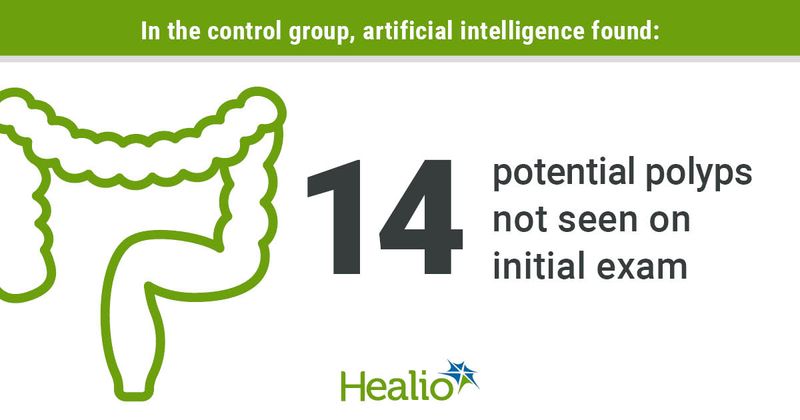Adenoma detection improves by using artificial intelligence
Artificial intelligence layered over existing colonoscopy imaging was highly accurate in identifying polyps, according to a poster at Digestive Diseases Week.
“It has an overall very high polyp detection rate. It is almost able to identify all, even very diminutive polyps,” Nirav Thosani, MD, MHA, told Healio in an interview. “In our retrospective review — a second look with the help of the AI — we identified several other potential areas that were probably colon polyps that we missed when we were doing colonoscopy without AI.”

In looking at the video library of 435 videos (230 confirmed polyps and 205 controls), Thosani and colleagues found that the polyp detection with the AI tool (Discovery AI System, Pentax Medical) was 99.1%. For polyps smaller than 5 mm, detection rate was 97.8% while it was 100% for those larger than 5 mm.
“We know that even for a best endoscopist, polyp miss rate can be as high as 20% and I think AI can really help to reduce that and overall increase ADR,” he said. “In the control group, the gastroenterologist used the AI tool to detect 14 possible polyps (6.8%) that were not seen on initial manual exam. To our surprise, these were small video segments of normal colon but when reviewing with AI, we felt they were several potential areas of missed polyp.”
Thosani said they are currently conducting a prospective randomized trial in which some participants have AI as part of their colonoscopy and others do not. This will show if there is an improvement in ADR and eventual reduction in colon cancer.
“AI can be used with all screening and surveillance colonoscopies as an adjunct tool. ... AI may identify potential areas of the polyp in real time. ... As a physician, you would decide if you agree with the AI,” Thosani said. “This is extremely user friendly and once cleared by FDA, it can be very easily implemented in routine clinical practice.”

